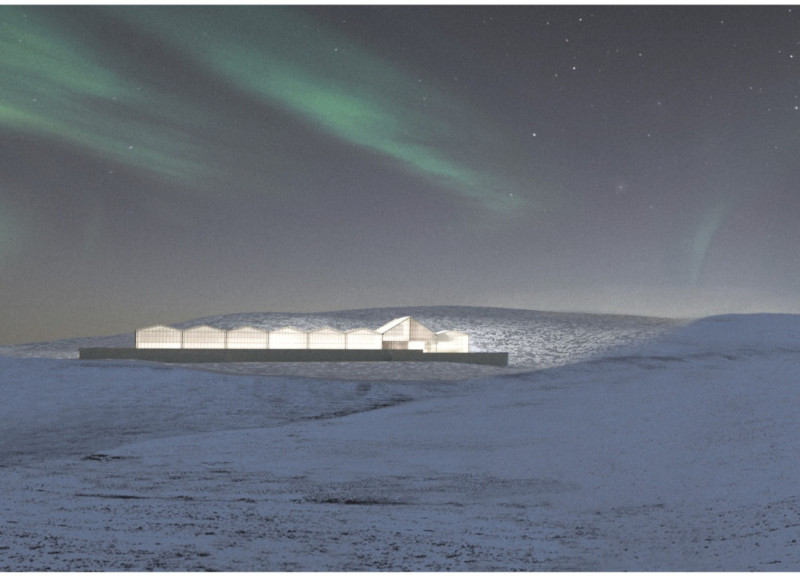5 key facts about this project
The community greenhouse project at Lake Myvatn in Iceland is a thoughtful initiative that integrates sustainability with local engagement. Situated in a unique landscape, the design serves distinct purposes as both a resource hub and a center for learning about sustainable practices. The concept emphasizes the idea of a circular economy, focusing on reusing existing structures and fostering connections within the community.
Architectural Concept
The design consists of two main areas: a larger, unheated section for logistical functions and a smaller, heated area for community activities. The unheated zone features collection containers, composting facilities, and a truck depot, which make waste management and resource collection more efficient. In contrast, the heated section includes a communal greenhouse along with multipurpose rooms meant for social interaction and educational programs focused on sustainability.
Visibility and Transparency
A significant element of the design is the emphasis on visibility regarding resource management. The greenhouse layout allows for observation of internal processes, making it easier for community members to see and understand the activities taking place. This openness not only enhances the function of the building but also encourages shared responsibility, helping to cultivate a sense of community involvement and environmental awareness.
Sustainable Energy and Waste Management
The project incorporates geothermal energy into its heating system, aligning with Iceland's natural advantages. The geothermal heat pump ensures that the building maintains a comfortable temperature throughout the year. In addition, a rotary drum composting system will manage organic waste collected on-site. This method demonstrates a commitment to effective waste management by producing compost that can be used in the communal greenhouse, reusing resources effectively.
Material Use
Regarding materials, the focus is on sustainability through the reuse of existing structures. Steel and glass are the main materials mentioned, chosen for their durability and environmental sustainability. The use of recycled concrete in certain design elements further highlights the project's commitment to reducing ecological impact while ensuring longevity.
The greenhouse design features a large roof that ties together various functional areas. This creates an inviting environment that supports community interaction and serves as a noticeable landmark within the scenic landscape of Lake Myvatn.






















































